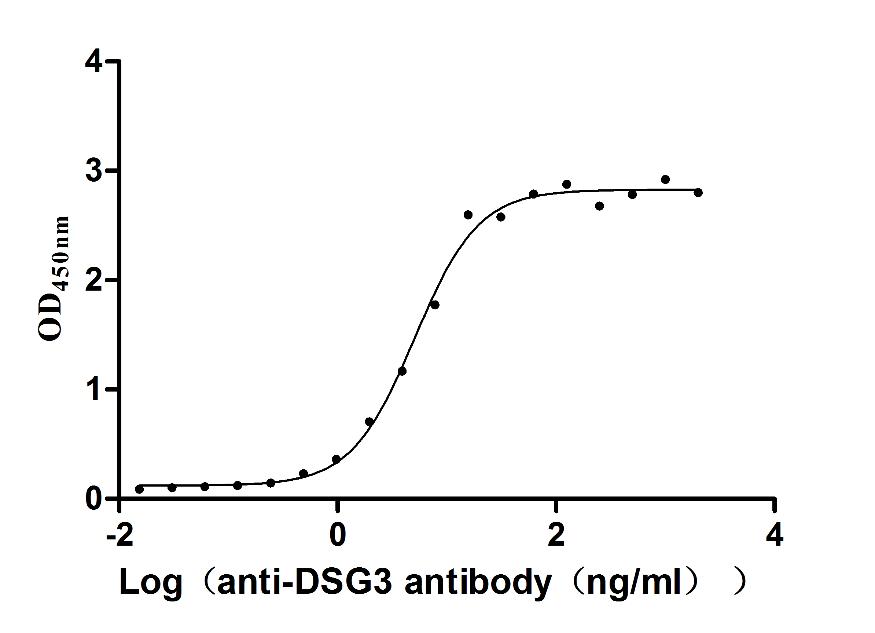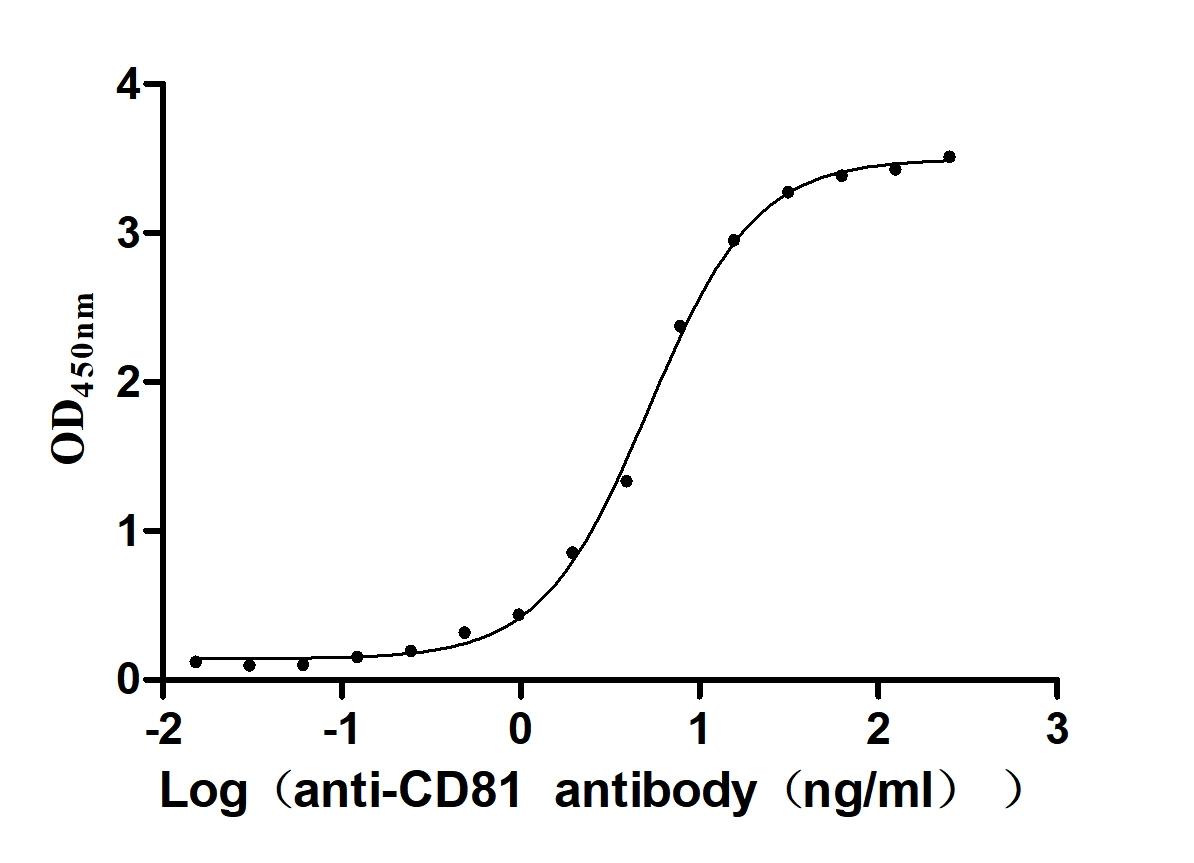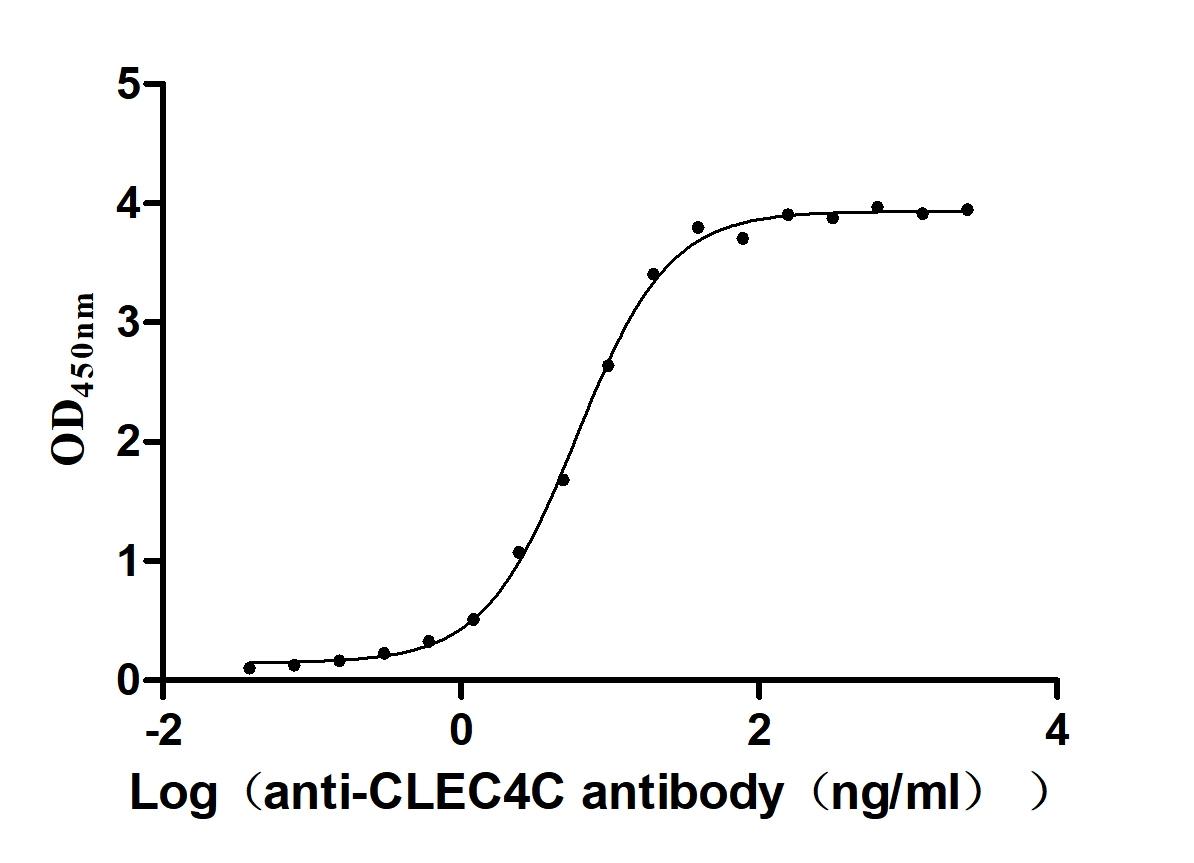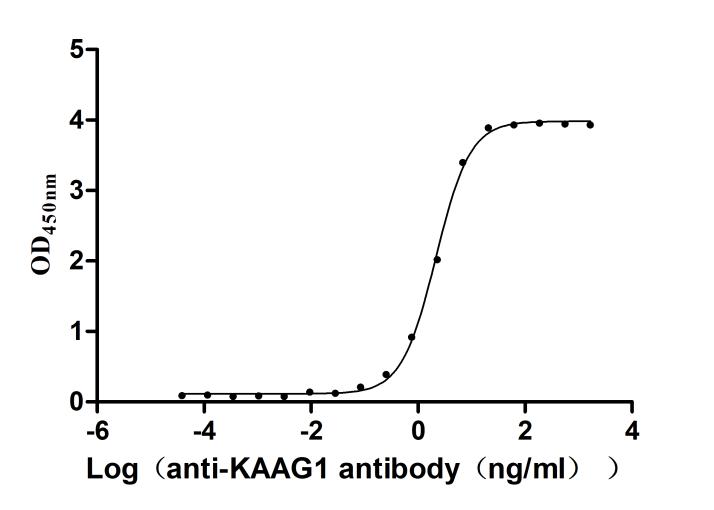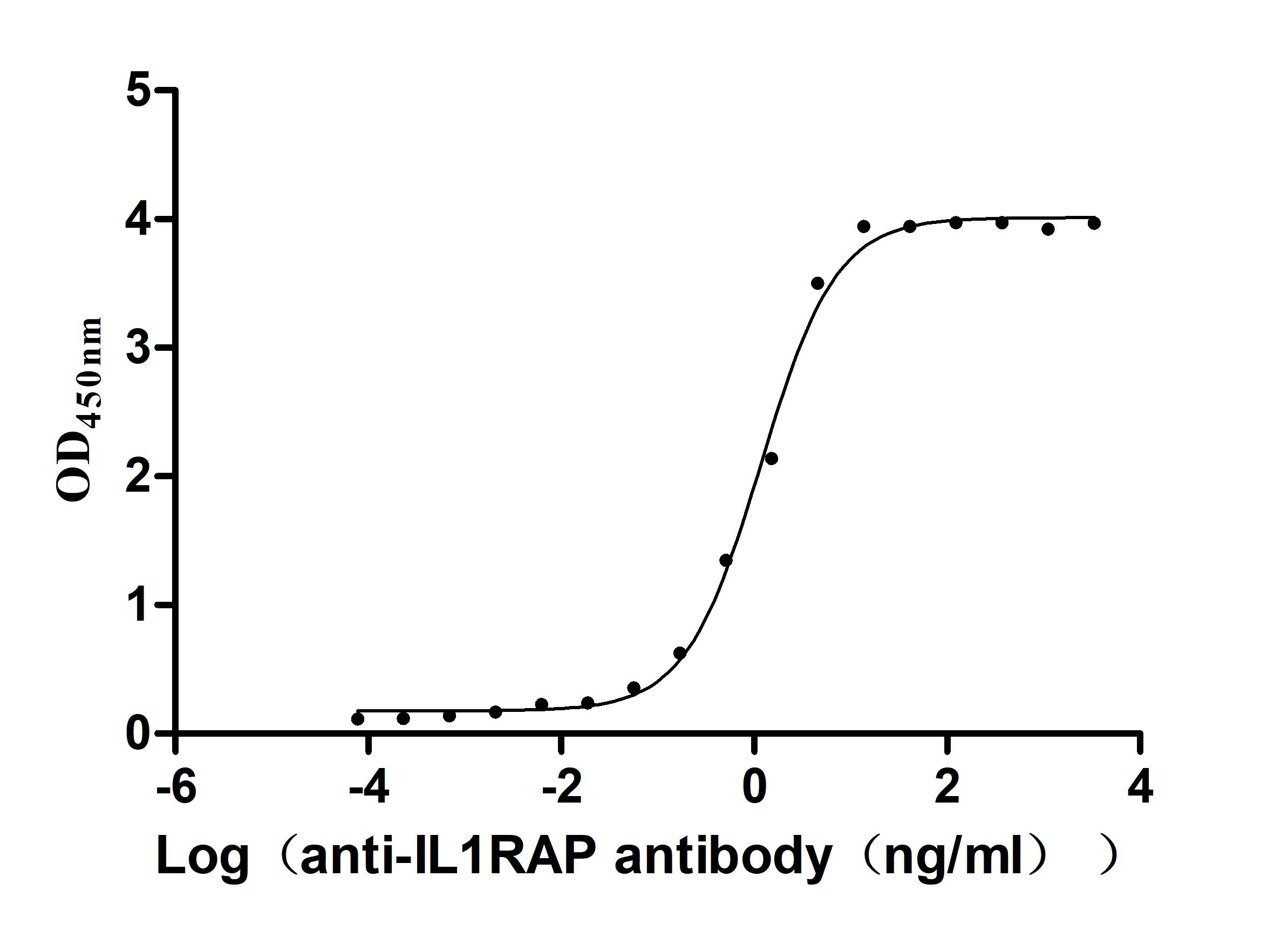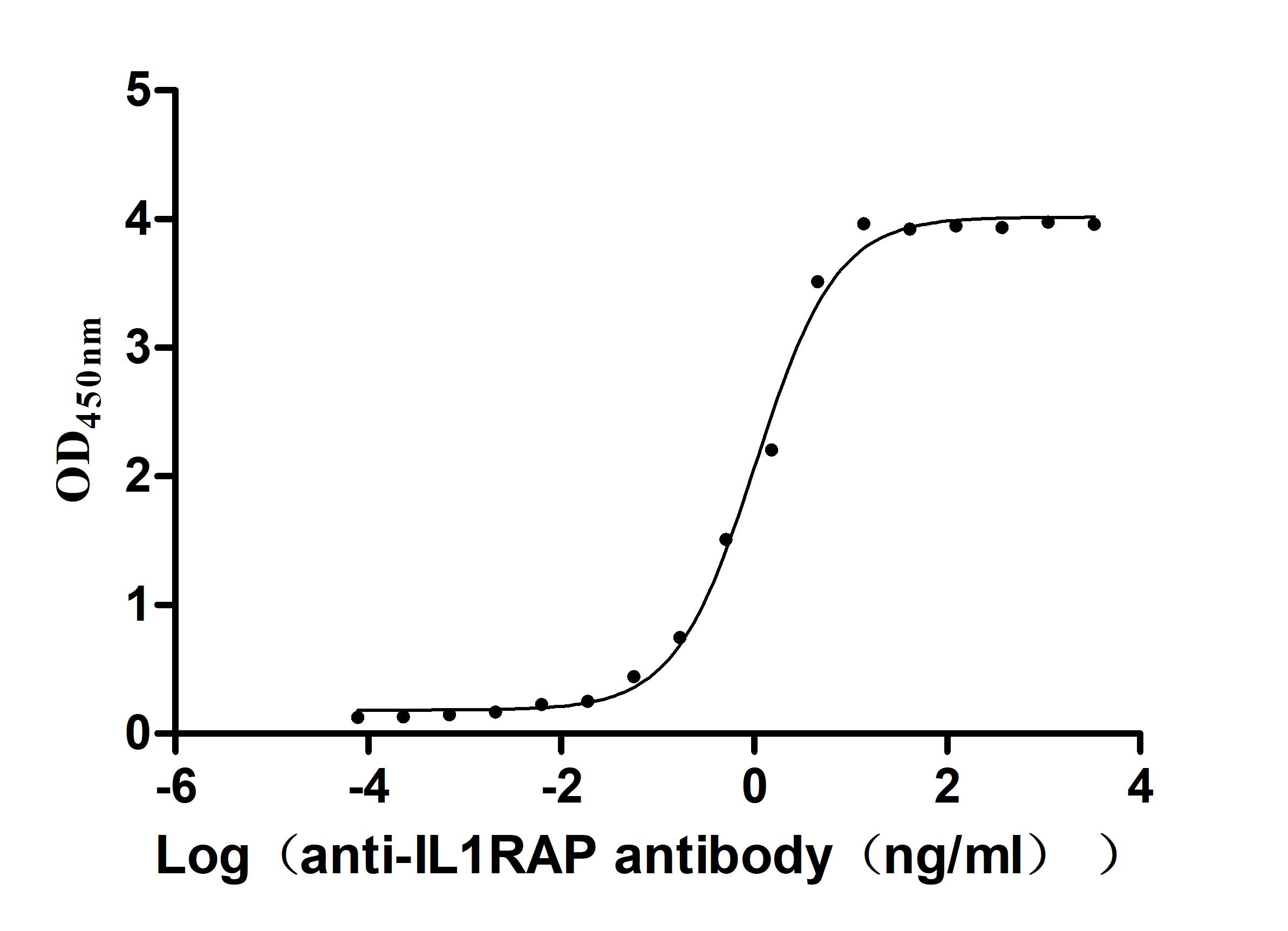Recombinant Human Holliday junction recognition protein (HJURP)
-
中文名稱:人HJURP重組蛋白
-
貨號:CSB-YP010467HU
-
規(guī)格:
-
來源:Yeast
-
其他:
-
中文名稱:人HJURP重組蛋白
-
貨號:CSB-EP010467HU-B
-
規(guī)格:
-
來源:E.coli
-
共軛:Avi-tag Biotinylated
E. coli biotin ligase (BirA) is highly specific in covalently attaching biotin to the 15 amino acid AviTag peptide. This recombinant protein was biotinylated in vivo by AviTag-BirA technology, which method is BriA catalyzes amide linkage between the biotin and the specific lysine of the AviTag.
-
其他:
-
中文名稱:人HJURP重組蛋白
-
貨號:CSB-BP010467HU
-
規(guī)格:
-
來源:Baculovirus
-
其他:
-
中文名稱:人HJURP重組蛋白
-
貨號:CSB-MP010467HU
-
規(guī)格:
-
來源:Mammalian cell
-
其他:
產(chǎn)品詳情
-
純度:>85% (SDS-PAGE)
-
基因名:HJURP
-
Uniprot No.:
-
別名:HJURP; FAKTS; FLEG1; URLC9; Holliday junction recognition protein; 14-3-3-associated AKT substrate; Fetal liver-expressing gene 1 protein; Up-regulated in lung cancer 9
-
種屬:Homo sapiens (Human)
-
蛋白長度:full length protein
-
表達(dá)區(qū)域:1-748
-
氨基酸序列MLGTLRAMEG EDVEDDQLLQ KLRASRRRFQ RRMQRLIEKY NQPFEDTPVV QMATLTYETP QGLRIWGGRL IKERNEGEIQ DSSMKPADRT DGSVQAAAWG PELPSHRTVL GADSKSGEVD ATSDQEESVA WALAPAVPQS PLKNELRRKY LTQVDILLQG AEYFECAGNR AGRDVRVTPL PSLASPAVPA PGYCSRISRK SPGDPAKPAS SPREWDPLHP SSTDMALVPR NDSLSLQETS SSSFLSSQPF EDDDICNVTI SDLYAGMLHS MSRLLSTKPS SIISTKTFIM QNWNSRRRHR YKSRMNKTYC KGARRSQRSS KENFIPCSEP VKGTGALRDC KNVLDVSCRK TGLKLEKAFL EVNRPQIHKL DPSWKERKVT PSKYSSLIYF DSSATYNLDE ENRFRTLKWL ISPVKIVSRP TIRQGHGENR QREIEIRFDQ LHREYCLSPR NQPRRMCLPD SWAMNMYRGG PASPGGLQGL ETRRLSLPSS KAKAKSLSEA FENLGKRSLE AGRCLPKSDS SSSLPKTNPT HSATRPQQTS DLHVQGNSSG IFRKSVSPSK TLSVPDKEVP GHGRNRYDEI KEEFDKLHQK YCLKSPGQMT VPLCIGVSTD KASMEVRYQT EGFLGKLNPD PHFQGFQKLP SSPLGCRKSL LGSTAIEAPS STCVARAITR DGTRDHQFPA KRPRLSEPQG SGRQGNSLGA SDGVDNTVRP GDQGSSSQPN SEERGENTSY RMEEKSDFML EKLETKSV
-
蛋白標(biāo)簽:Tag?type?will?be?determined?during?the?manufacturing?process.
The tag type will be determined during production process. If you have specified tag type, please tell us and we will develop the specified tag preferentially. -
產(chǎn)品提供形式:Lyophilized powder
Note: We will preferentially ship the format that we have in stock, however, if you have any special requirement for the format, please remark your requirement when placing the order, we will prepare according to your demand. -
復(fù)溶:We recommend that this vial be briefly centrifuged prior to opening to bring the contents to the bottom. Please reconstitute protein in deionized sterile water to a concentration of 0.1-1.0 mg/mL.We recommend to add 5-50% of glycerol (final concentration) and aliquot for long-term storage at -20℃/-80℃. Our default final concentration of glycerol is 50%. Customers could use it as reference.
-
儲存條件:Store at -20°C/-80°C upon receipt, aliquoting is necessary for mutiple use. Avoid repeated freeze-thaw cycles.
-
保質(zhì)期:The shelf life is related to many factors, storage state, buffer ingredients, storage temperature and the stability of the protein itself.
Generally, the shelf life of liquid form is 6 months at -20°C/-80°C. The shelf life of lyophilized form is 12 months at -20°C/-80°C. -
貨期:Delivery time may differ from different purchasing way or location, please kindly consult your local distributors for specific delivery time.Note: All of our proteins are default shipped with normal blue ice packs, if you request to ship with dry ice, please communicate with us in advance and extra fees will be charged.
-
注意事項:Repeated freezing and thawing is not recommended. Store working aliquots at 4°C for up to one week.
-
Datasheet :Please contact us to get it.
相關(guān)產(chǎn)品
靶點詳情
-
功能:Centromeric protein that plays a central role in the incorporation and maintenance of histone H3-like variant CENPA at centromeres. Acts as a specific chaperone for CENPA and is required for the incorporation of newly synthesized CENPA molecules into nucleosomes at replicated centromeres. Prevents CENPA-H4 tetramerization and prevents premature DNA binding by the CENPA-H4 tetramer. Directly binds Holliday junctions.
-
基因功能參考文獻(xiàn):
- Increased expression of HJURP was identified as an independent negative prognostic biomarker for patients with advanced serous ovarian cancer. PMID: 29743473
- during the CENP-A/H4 deposition process, the chaperone HJURP protects various substructures of the dimer, serving both as a folding and binding chaperone PMID: 27454815
- Functional p53 elicits a cell cycle arrest response, whereas, in p53-null transformed cells, the absence of arrest enables the loss of HJURP to induce severe aneuploidy and, ultimately, apoptotic cell death PMID: 28356341
- An increased occurrence of hepatocellular carcinoma was consistently associated with A/C or C/C genotypes of the non-synonymous SNP rs3771333 compared with the A/A genotype in both the Fusui and Haimen populations. PMID: 26863619
- Authors propose that this centromere expansion activity reflects the functional properties of HJURP, which uses this activity to contribute to the plastic establishment of a centromeric chromatin structure. PMID: 26063729
- 3 biomarkers in 44 patients with in situ breast cancers were evaluated: TG2 (transglutaminase 2), HJURP (Holliday junction recognition protein), and HIF-1alpha (hypoxia inducible factor-1 alpha). PMID: 25243117
- On the basis of our findings, we propose that HJURP serves a dual chaperone function in coordinating CenH3(CENP-A) and CENP-C recruitment. PMID: 25843710
- HJURP can discriminate favorable and unfavorable outcome within the luminal A subtype, outperforming the currently utilized proliferation marker Ki67, as an independent prognostic marker for luminal A patients. PMID: 25497280
- Phosphorylation state of HJURP controls its centromeric recruitment. HJURP binding to DNA promotes loading of CenH3CENP-A at centromeres. PMID: 25001279
- The study describes a novel function for human centromeric long non-coding RNAs in the recruitment of HJURP and CENP-A, implicating RNA-based chaperone targeting in histone variant assembly. PMID: 25117489
- The levels of the EDNRB, HJURP and p60/CAF-1 proteins were strongly associated with overall survival in high-grade gliomas patients (p<0.001, p<0.001 and p=0.002, respectively), whereas the one of PDLI4 was not (P=0.11). PMID: 24039914
- Mis18beta binds with and specifies the centromere localization of HJURP. PMID: 24519934
- HJURP has an important role in the maintenance of extremely proliferative cells of high-grade gliomas PMID: 23638004
- a mechanism whereby the CENP-A pre-nucleosomal complex achieves assembly of the octameric CENP-A nucleosome through the dimerization of the CENP-A chaperone HJURP. PMID: 23771058
- Downregulation of HJURP in young cells led to premature senescence. p53 knockdown, but not p16 knockdown, abolished senescence phenotypes caused by HJURP reduction. PMID: 23292286
- And-1 together with HJURP regulates the assembly of new CENP-A onto centromeres. PMID: 23184928
- stringent regulation of HJURP and SCM3 expression are critical for genome stability. PMID: 21980305
- An amino-terminal fragment of HJURP was able to assemble CENP-A nucleosomes in vitro, demonstrating that HJURP is a chromatin assembly factor. PMID: 21768289
- The crystal structure of an HJURP-CENP-A-histone H4 complex shows that HJURP binds a CENP-A-H4 heterodimer PMID: 21478274
- Data show that HJURP mRNA level is a prognostic factor for disease-free and overall survival in patients with breast cancer and is a predictive biomarker for sensitivity to radiotherapy. PMID: 20211017
- found that HJURP, a member of the complex, was required for cell cycle specific targeting of CENP-A to centromeres. PMID: 20080577
- HJURP is a possible cell-cycle-regulated CENP-A-specific histone chaperone required for centromeric chromatin assembly PMID: 19410544
- HJURP is a key factor for CENP-A deposition and maintenance at centromeres PMID: 19410545
- hFLEG1 is associated with the CENP-A centromeric nucleosome PMID: 16622419
顯示更多
收起更多
-
亞細(xì)胞定位:Nucleus, nucleolus. Chromosome, centromere. Note=Localizes in centromeres during late telophase and early G1, when CENPA nucleosomes are assembled. Localizes to nucleolus during S phase, nucleolus site being often related to storage.
-
組織特異性:According to PubMed:17256767, highly expressed in the thymus with lower levels in the placenta, small intestine, liver, skeletal muscle, and colon. According to PubMed:17823411, highly expressed in testis, and at a relatively lower level in thymus and bon
-
數(shù)據(jù)庫鏈接:
Most popular with customers
-
Recombinant Human Cannabinoid receptor 1 (CNR1)-VLPs (Active)
Express system: Mammalian cell
Species: Homo sapiens (Human)
-
Recombinant Human Claudin-6 (CLDN6)-VLPs, Fluorescent (Active)
Express system: Mammalian cell
Species: Homo sapiens (Human)
-
Recombinant Human Desmoglein-3 (DSG3), partial (Active)
Express system: Baculovirus
Species: Homo sapiens (Human)
-
Recombinant Human CD81 antigen (CD81), partial (Active)
Express system: Mammalian cell
Species: Homo sapiens (Human)
-
Recombinant Macaca fascicularis C-type lectin domain family 4 member C(CLEC4C), partial (Active)
Express system: Mammalian cell
Species: Macaca fascicularis (Crab-eating macaque) (Cynomolgus monkey)
-
Recombinant Human Kidney-associated antigen 1 (KAAG1) (Active)
Express system: E.coli
Species: Homo sapiens (Human)
-
Recombinant Human Interleukin-1 receptor accessory protein (IL1RAP), partial (Active)
Express system: Mammalian cell
Species: Homo sapiens (Human)
-
Recombinant Macaca fascicularis Interleukin 1 receptor accessory protein(IL1RAP), partial (Active)
Express system: Mammalian cell
Species: Macaca fascicularis (Crab-eating macaque) (Cynomolgus monkey)


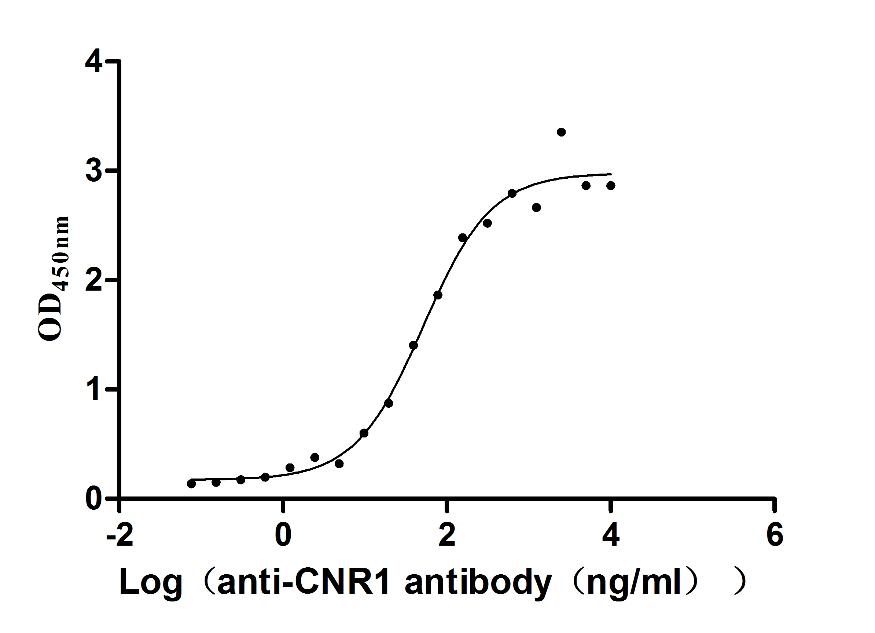
f4-AC1.jpg)
